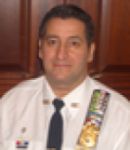|
The New Gangster Paradise: How Gangs come to being in once quiet communities far from Gang Central. November 16, 2011 By Sgt Lou Savelli, NYPD (retired)  Lou Savelli, former Detective Supervisor, NYPD Terrorist Interdiction Unit. There are many reasons that cause gang members to migrate from one neighborhood to another or from one city to another. These reasons can range from family migration (parent's business, part of a migrant workforce, family moves to be closer to an incarcerated family member), or attending a new school to being placed in a foster home or going to live with a relative and fleeing from justice. When there is a drug connection, however there can be other reasons that gang members migrate to other areas. These reasons can include new business markets, less competition, higher profits, less police enforcement, and greater stature may be achieved in a new neighborhood. These neighborhoods, often quiet communities that were historically unaffected by the ills of the big cities, become essentially a 'new gangster paradise' for their newest residents and the sickness that they are about to inflict. In many cases, in the beginning, a low-level gang member arrives on the scene in the new neighborhood. He may stay with family or friends, in the beginning or live there long-term. He is enrolled in the local school and brags about being a gangster and his gang exploits. He overtly dresses like the gang in which he boasts membership or imitates a gang from his old neighborhood. Before long, he develops a following of younger or less street savvy, associates. He may join an existing gang or group and becomes the leader or advisor. He is considered the OG (Original Gangster), which is usually bestowed upon the originating member(s) of a gang - but who is going to question him? In essence, he is the local OG for the overall gang. The gang starts to develop its own identity. The gang becomes involved in graffiti to gain recognition and claim turf then begin 'wilding' or 'rat pack' crimes in local malls and shopping areas. They assault weaker groups or individuals who cannot offer much resistance. The braver they get, the more challenging they become. They acquire weapons. Local leadership roles develop within the gang. The gang quickly develops its own slang, tattoos, hand signs and dress code. Local new members suffer bodily injuries from initiations and violations of rules that the original members may have avoided. With the leadership of the OG, the gang develops criminal businesses, such as drug sales, street robberies and burglaries. They continue to write graffiti but it becomes more invasive to the community and challenging to rivals. The activities of the members revolve around the gang. Even a Saturday afternoon shopping trip to the mall becomes an opportunity to shoplift and cause trouble. The OG holds meeting and collects dues. The minutes of the meetings and the dues are used for the OG's expenses or sent directly to the main gang. Meanwhile, the community experiences a change. At first it is gradual then it becomes quite significant. The first sign is the graffiti and then it is the large groups of rowdy youths hanging out in the once pristine schoolyards and playgrounds. Police receive community complaints of loud noise, screeching tires, harassment by local youth and street fights. Eventually, these reports include 'shots fired', car break-ins and burglaries. Street and store robberies increase and the general quality of life in the community is severely affected. Elderly citizens and families with children tend to stay indoors more while the local youth roam the streets. Community members report 'undesirables' (people buying drugs) hanging around the neighborhoods. Local cars are broken into and vandalism is happening. Schools experience a drastic increase in fights, vandalism, graffiti and truancy. There are confrontations between gang members and local citizens. When police arrive, people are afraid to become witnesses. The OG organizes the drug sales or becomes a supplier of drugs to the gang and eventually other gangs. If he is a member of a larger, nationally-affiliated, gang, he will have to report his activities and success to the gang's leadership. The report includes quantities of drugs sold, profits, police interventions, competition and public tolerance. It may also include reports on new members and identifying the most trustworthy to those members who pose a potential problem. Depending upon the analysis by the gang's leaders in the old neighborhood, instructions will be given to their member or intervention may occur by the original gang's enforcers. As a drug dealer, the local OG may be approached by area drug dealers for supplies or he may approach them, or other gangs, to act as a supplier. The purpose is to increase profits for the gang. Members of the gang hand out free 'drug' samples to local school kids and to patrons of bars and nightclubs to 'hook' new customers. The gang recruits more members and branches out their drug operations. Other than the drug trade, other criminal operations may be further developed or new ones created. The violence increases to the point where drive-by shootings occur and the once quiet neighborhood experiences their first murder, then second, then third and now, the fiber of the community has changed forever. |